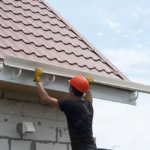When considering roof ventilation, one may ponder: How many roof vents do I need? Understanding the correct number of vents is crucial for achieving a balanced and energy-efficient home. As a homeowner, diving into this aspect of your home can bring tremendous benefits. Heres what you need to know.
Roof ventilation plays a big role in maintaining the integrity and lifespan of your roof. With the rapid advancements in roofing technology, there are now approved methods and materials that ensure optimal performance and comfort for your home.

Why is Roof Ventilation Important?
Proper ventilation is vital to regulate temperature, controlling moisture, and aiding in prolonging the life of roofing materials. Insufficient ventilation can lead to multiple problems, from increased energy costs to potential structural damage.
The Functionality of Roof Vents
Your roof vents work to remove excess heat and moisture. They are designed to let stale air escape from your attic, which can affect the efficiency of your heating and cooling systems.
Types of Roof Vents: Approved Options
Understanding the types of vents available is key to addressing how many you may need. Different roofing systems and climates require specific solutions.
Passive Roof Vents
These include ridge vents, soffit vents, and gable-end vents. They work without any mechanical systems but rely on natural airflow and do not require any electricity.
Active Roof Vents
This category includes powered options like turbine vents and attic fans. They actively push out air and require an energy source but can enhance air movement especially in regions where natural airflow is minimal.
Calculating How Many Roof Vents You Need
The number of vents needed depends on factors like attic space, roof shape, and local climate. Generally, most installations follow a guideline where one square foot of ventilation is needed for every 300 square feet of attic floor space.
Using Roofing Professional Tools
Consulting a professional or using specific calculators can provide a more accurate estimation of your needs, ensuring your home utilizes approved ventilation plans tailored to its unique structure.
Technology Behind Roof Ventilation
The introduction of new **technology** in roofing has streamlined ventilation processes, using smart systems to regulate airflow efficiently.
Big Advancements in Roofing Mechanics
Major improvements have occurred in the manufacturing of materials as well as design elements, contributing to an optimized ventilation balance.
Installation Tips from Experts
Here are some practical suggestions for those considering taking on their roof ventilation project:
- Ensure even distribution of vents across the roof.
- Factor in the wind direction prevalent in your area to maximize airflow.
- Regularly inspect vents for debris and other blockages.
Homeowner Considerations: What Works Best for You?
Understanding your specific home environment and the seasonal changes in your region affects the decision on what and how many vents you need.
Climate Durability
Consider the common weather patterns in your area and how durable specific roof types are in these conditions. For example, EPDM roofing offers great resilience.
Maintenance of Roof Vents
Regular maintenance and inspection are crucial for keeping your roof vent system running smoothly. Keep an eye out for any signs of wear and tear.
Common Issues
Look for blockages, bird nests, or mechanical failures in active systems, and seek professional help if necessary.
Approved Cost Implications
Roof ventilation costs vary, but investing in it can significantly reduce utility bills. Find out more about potential expenses and savings involved.
How to Choose a Roofing Construction Company
Selecting a reliable contractor to address your venting needs is important. For guidance, explore choosing the right company.
Delighted Homeowners Share Their Stories
Hear from individuals who have optimized their home’s ventilation and experienced firsthand the tremendous impact proper venting has made.
Technology at the Forefront of Home Safety
Contemporary technological advancements not only improve comfort but also ensure health and safety standards are met. Explore these tools.
Preparing for the Future: Advancing Ventilation Techniques
As technology progresses, so do the options for ventilation. Innovative designs and new materials are paving the way for more efficient systems.
Conclusion
Understanding how many roof vents do I need? is an important part of maintaining a comfortable and efficient home. Whether youre taking advantage of the biggest advancements in technology or simply ensuring approved ventilation to prevent issues, analyzing your roof’s specific needs can provide long-term benefits.

FAQs
- Q: Can I install roof vents myself?
A: While possible, it is recommended to consult with a professional to ensure the perfect balance and placement of your vents.
- Q: How do I know if I need more venting?
A: Watch for signs like moisture in your attic, increased energy bills, and temperature imbalances in your home.
- Q: What are the costs associated with installing roof vents?
A: Costs will vary based on the type of vent and installation requirements. It is best to consult local professionals for an estimate.
This article contains affiliate links. We may earn a commission at no extra cost to you.








